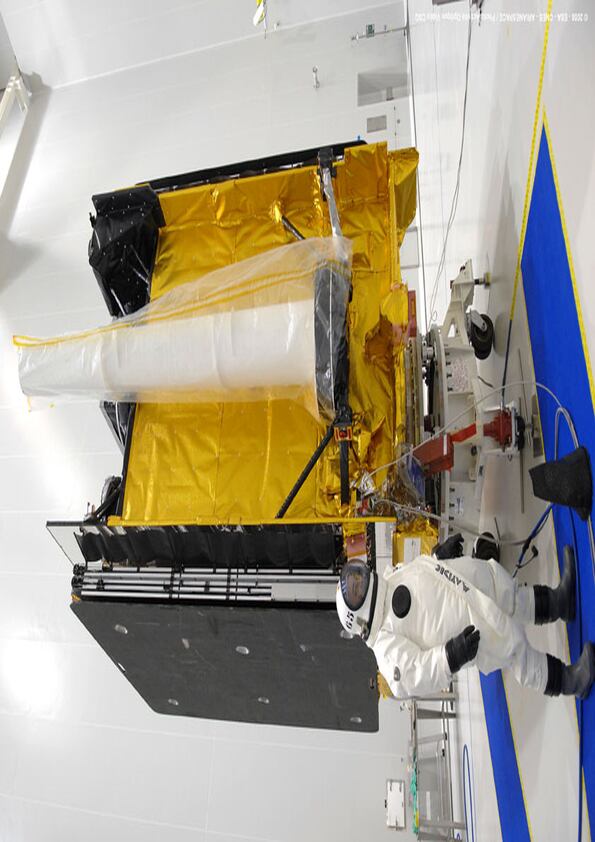Correction: A previous version of this story incorrectly attributed the British Ministry of Defence’s investment into a specific satellite. This has been corrected to show the MoD only confirmed its monetary commitment in a commercial satellite provider, not a specific satellite or program.
LONDON ― The British military is to test the ability of constellations of low-Earth orbit satellites to provide tactical intelligence gathering.
The military has taken a share in a prototype space vehicle about to be launched by Surrey Satellite Technology, or SSTL. The satellite, known as Carbonite-2 , sometimes referred to as EiX2, will give the military hands-on experience on a spacecraft able to offer customers high-resolution, full-motion video imagery in color for intelligence gathering and other duties.
The Ministry of Defence’s involvement in what was previously a commercial program has not been officially announced, but a spokesman for the department confirmed they had struck a deal with a satellite builder to explore the space vehicles capabilities.
“We have entered into an agreement with a commercial satellite provider for a capability demonstrator program. Details remain commercially sensitive until after the launch of the vehicle,” he said.
“This program will play a crucial role in shaping our vision for a future constellation of small satellites, comprising a diverse range of sensors and ground stations, and offers the U.K. the opportunity to lead the development of that program,” the MoD official said.
Industry sources say the spacecraft is the Carbonite-2. The technology demonstration mission is scheduled to get underway late next month when India’s Polar Satellite Launch Vehicle lifts the spacecraft into low-Earth orbit.
The MoD spokesman confirmed they were committed to spending £4.5 million (U.S. $6 million) on a commercial satellite provider, but would not confirm it was in relation to the Carbonite-2.
SSTL, an Airbus subsidiary based in Guildford, southern England, did not return calls by Defense News.
It’s the first time the MoD has invested in this kind of space program since a joint venture with the then-British National Space Centre saw an SSTL-built demonstrator satellite called TopSat launched in 2005.
The 100-kilogram Carbonite-2 spacecraft is owned and operated by SSTL but is a prototype for a constellation of satellites ordered earlier this month by Earth-i , a British commercial imagery company.
Earth-i has ordered a batch of five satellites based on Carbonite-2 for delivery starting early 2019. Further spacecraft are expected to be added to the constellation subject to demand.
The constellation’s Earth-observation capabilities include the provision of high-frame rate images with resolutions better than 1 meter. The vehicle has the ability to film moving objects such as vehicles, ships and aircraft in ultrahigh-definition color video as well as undertake rapid tasking of satellites to take images or video and fast data download within minutes of acquisition.
SSTL previously tested the technology in a satellite called Carbonite-1, which was launched in 2015.
For decades the British have relied on an agreement with the U.S. government to provide space-based surveillance and reconnaissance data, But since low-Earth orbit satellites don’t offer the same degree of fidelity as the systems deployed by the Pentagon, London is looking at several space and near-space technology options to provide capability of their own at a tactical level.
That’s a move that would likely be welcomed in Washington, said one industry source. “With the big escalation of the threat from space gaining increasing attention in Washington, any allies showing signs of pulling their weight in space would be welcomed by the U.S.,” the source said.
Aside from Carbonite-2, Airbus in the U.K. is building three Zephyr 8 high-altitude solar-powered UAVs for the MoD in a £13 million operational concept demonstrator program.
The first of the platforms, referred to as pseudo-satellites by Airbus because they can fly on the edge of space for weeks on end, is expected to be flight tested next year. The aircraft is expected to carry communications and surveillance payloads.
The MoD spokesman said there was no connection between the Zephyr work and the Carbonite-2 program.
Both programs, however, will likely help inform Britain’s ongoing work looking at how the nation meets intelligence, surveillance and reconnaissance requirements going forward, including looking at how the gap can be filled if the highly regarded Sentinel surveillance aircraft is prematurely scrapped in 2021, as currently planned by the MoD.
Doug Barrie, the senior military air analyst at the International Institute for Strategic Studies think tank in London, said relatively low-cost satellites are not a substitute for conventional ISR capabilities.
“Satellites are not a replacement for other ISR platforms, as they don’t do the same things. It’s not just the flexibility and coverage conventional airborne platforms can offer ― you also have to consider the vulnerability of the satellites,” he said.
“I don’t see satellite constellations of this nature as a replacement for air-breathing assets. I see it as complementary. If you can’t afford to get into the full-blown reconnaissance satellite world, which very few countries can, then this is one way to do it less expensively” Barrie added.
The Carbonite-2 investment comes as British involvement in the sector gains increasing attention on the military front with a defense space strategy expected in the U.K. soon.
The largest program on the stocks is a £6 billion program called Skynet 6 to build and operate a new network of military communications satellites.
RELATED

Earlier this month, MoD officials told executives at an industry day that the program was funded and would be going ahead.
In the meantime, the British gathered international advice on policy and strategy with a space forum led by the chief of the Defence Staff, Air Chief Marshal Stuart Peach, which took place at Oxford University on Nov 28.
The British invited about 50 high-level individuals. Attendees from defense agencies, the commercial space sector, academia and think tanks were drawn from Europe, the U.S. and India for the one-day meeting.
Andrew Chuter is the United Kingdom correspondent for Defense News.








